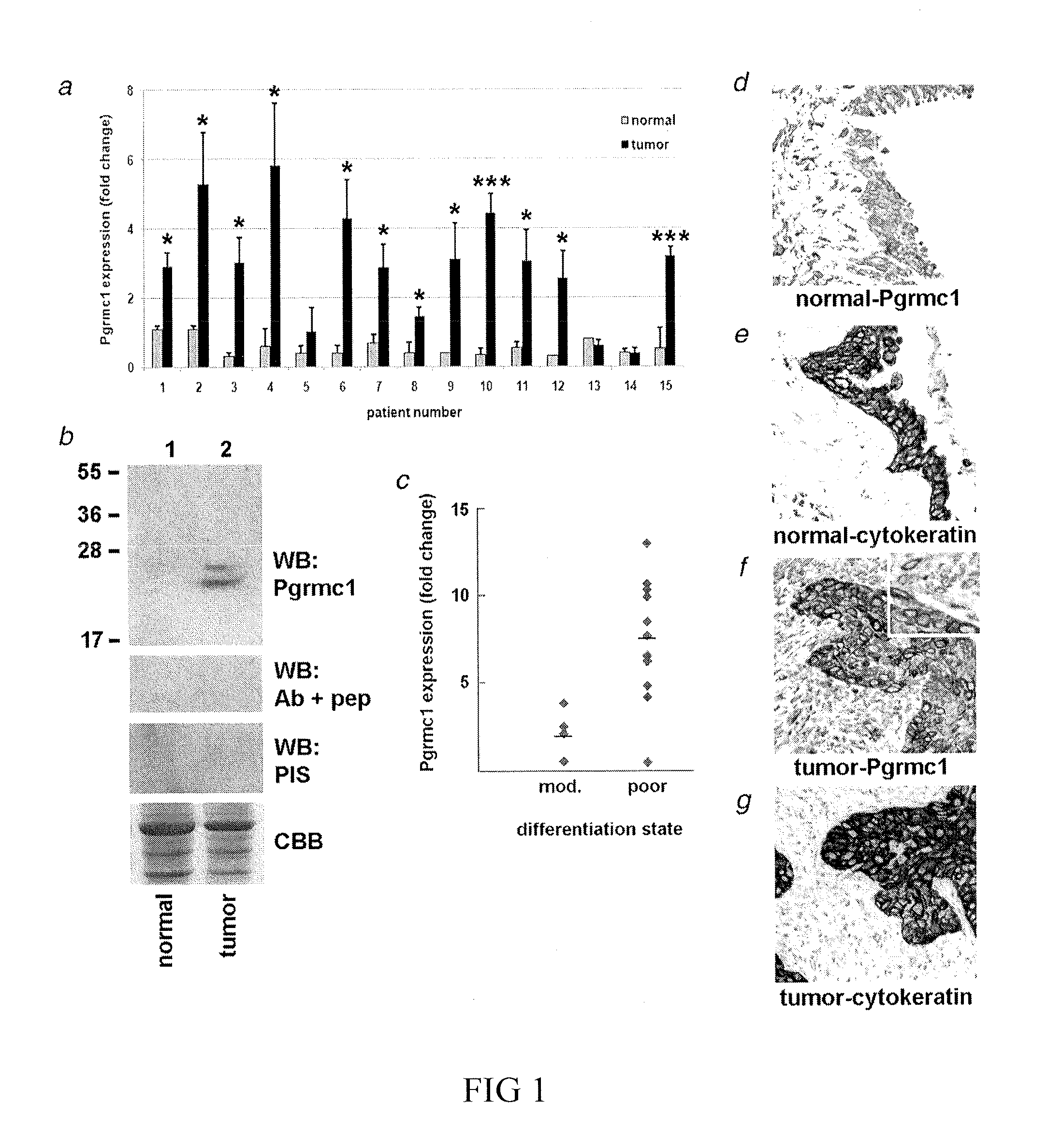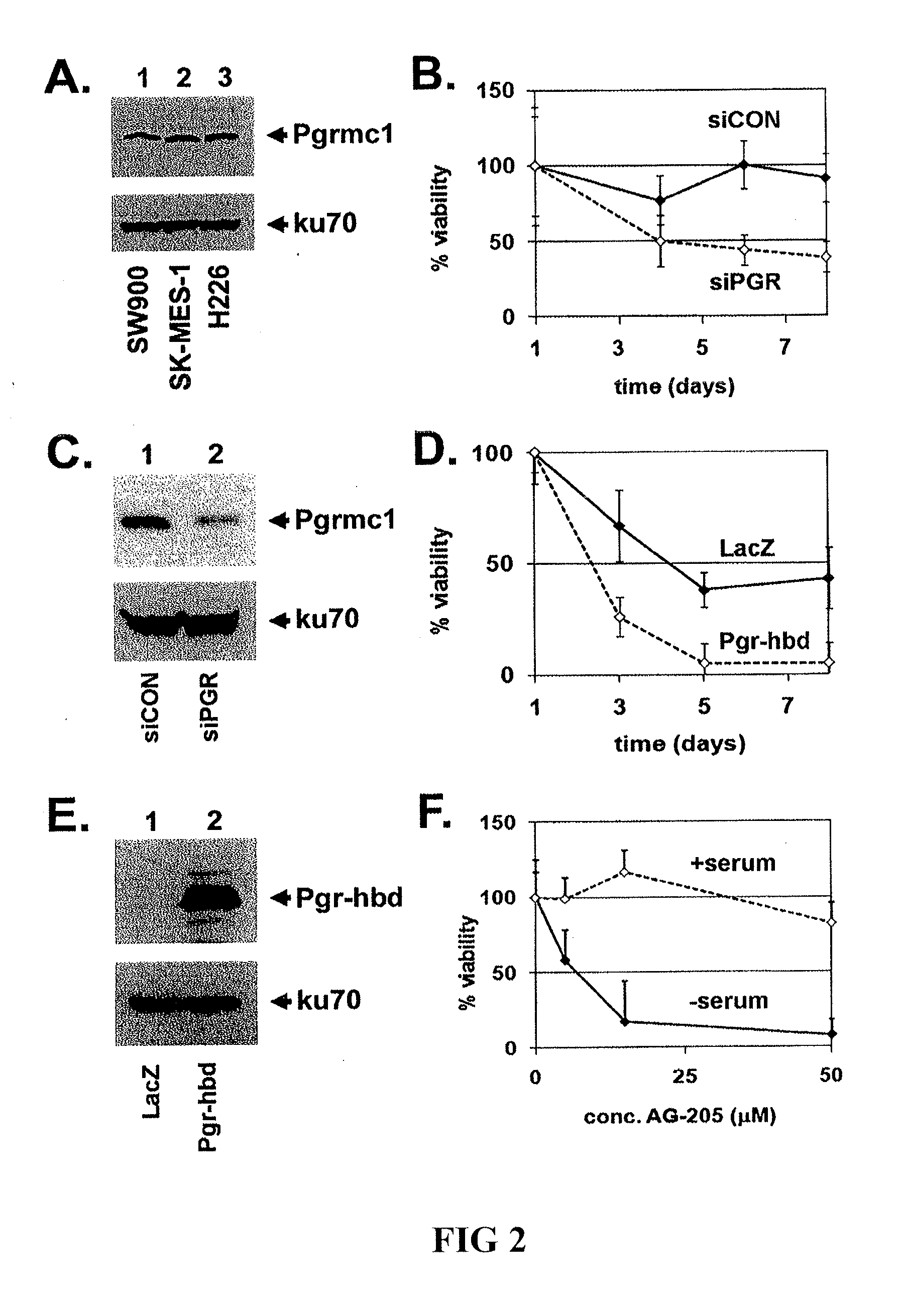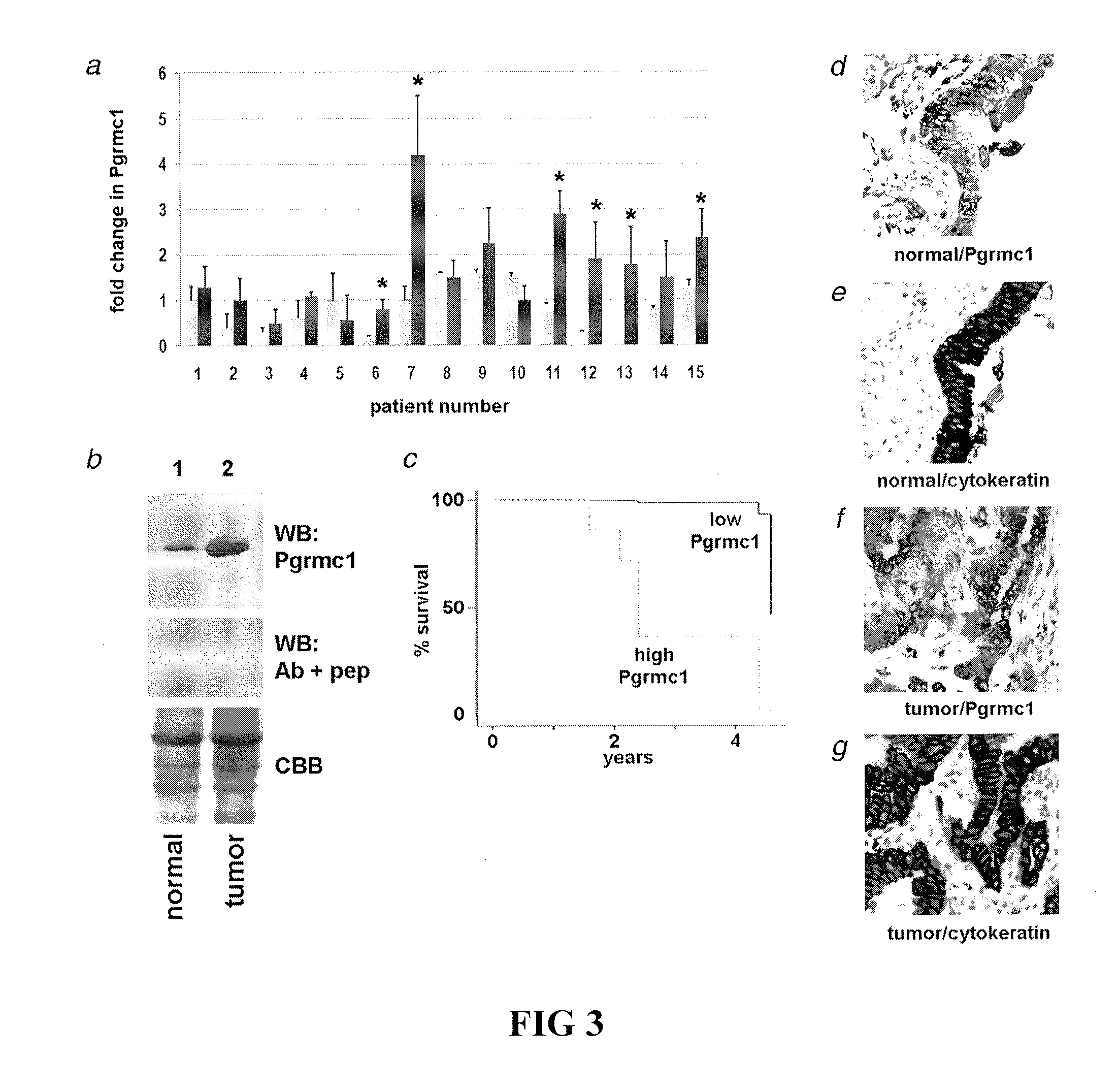Secreted Tumor-Associated Cytochrome as a Blood-Based Biomarker for Cancer
a technology of tumor-associated cytochrome and secreted tumor-associated cytochrome, which is applied in the field of methods for the detection and diagnosis of cancer, can solve the problems of invasive procedures and, therefore, less than desirabl
- Summary
- Abstract
- Description
- Claims
- Application Information
AI Technical Summary
Benefits of technology
Problems solved by technology
Method used
Image
Examples
example 1
Pgrmc1 Levels Correlate with Differentiation Status in Squamous Cell Lung Carcinoma
[0056]In 15 matched samples of SCLC with adjacent nonmalignant tissue, Pgrmc1 was overexpressed significantly in 12 / 15 of the tumors relative to nonmalignant tissue from the same patient as determined by western blot in nonmalignant tissue (gray bars) and paired tumors (black bars) from the same patient. (FIG. 1A). Samples 5, 13 and 14 were the exceptions (FIG. 1A). A Pgrmc1-specific antibody recognized elevated Pgrmc1 levels in an SCLC tumor (FIG. 1B, upper panel, lane 2) compared to matched normal tissue (FIG. 1B, upper panel, lane 1). Pgrmc1 recognized a band of 25 kDa in nonmalignant tissue and a doublet of bands in the majority of tumors, and both bands were blocked by the immunogenic peptide, while neither band was recognized by preimmune serum (PIS) (FIG. 1B). Samples were analyzed in triplicate, and overall Pgrmc1 levels relative to the matched nonmalignant tissue ranged from 0.7-fold to 13-f...
example 2
Pgrmc1 Increases Viability in Squamous Lung Cancer Cell Lines
[0057]Pgrmc1 expression had not been characterized in squamous cell cancers previously, and Pgrmc1 was readily detectable in SW900, SKMES-1 and NCI-H226 cells (FIG. 2A). Pgrmc1 inhibition by RNA inhibition (RNAi) suppressed proliferation in the non-small cell lung cancer (NSCLC) adenocarcinoma cell line A549 but had little effect on cell survival (Ahmed et al., J Pharmacal Exp Ther 2010; 333:564-73). In contrast, RNAi of Pgrmc1 in NCI-H226 cells decreased the cell number (FIG. 2B), and the knockdown of Pgrmc1 expression was verified by western blot (FIG. 2C). Loss of viability after siRNA transfection was not through the apoptotic pathway, because the cleavage of caspase 3 and caspase 8 were unaffected (FIG. 1A) and etoposide treatment served as a positive control for apoptosis (FIG. 1B).
[0058]Therapeutic options for SCLC are limited. However, a recently characterized Pgrmc1 inhibitor, AG-205, efficiently inhibited the gro...
example 3
Pgrmc1 Levels Correlate with Survival in Lung Adenocarcinomas
[0059]Pgrmc1 promotes tumor formation and metastatic spread in adenocarcinoma cell lines. In a panel of 15 paired sets of lung adenocarcinomas with nonmalignant tissue from the same patient, Pgrmc1 was significantly elevated in 6 / 15 adenocarcinomas. Pgrmc1 levels varied more in nonmalignant tissue adjacent to the tumors than for squamous cell carcinomas (FIG. 3A). Similar to the SCLC analysis, the band recognized by the Pgrmc1 antibody was blocked by the addition of immunogenic peptide (FIG. 3B, Patient 7 from FIG. 3A).
[0060]To determine the clinical impact of Pgrmc1 levels, tumors were grouped by low or high Pgrmc1 tumor levels, and Pgrmc1 levels correlated inversely with survival in the patients (FIG. 3C, p=0.035). There was a trend between survival and Pgrmc1 levels in the nonmalignant tissues adjacent to the tumors that did not achieve significance. In contrast to SCLC, Pgrmc1 levels did not correlate to a significant ...
PUM
| Property | Measurement | Unit |
|---|---|---|
| pH | aaaaa | aaaaa |
| morphology | aaaaa | aaaaa |
| computed tomography | aaaaa | aaaaa |
Abstract
Description
Claims
Application Information
 Login to View More
Login to View More - R&D
- Intellectual Property
- Life Sciences
- Materials
- Tech Scout
- Unparalleled Data Quality
- Higher Quality Content
- 60% Fewer Hallucinations
Browse by: Latest US Patents, China's latest patents, Technical Efficacy Thesaurus, Application Domain, Technology Topic, Popular Technical Reports.
© 2025 PatSnap. All rights reserved.Legal|Privacy policy|Modern Slavery Act Transparency Statement|Sitemap|About US| Contact US: help@patsnap.com



